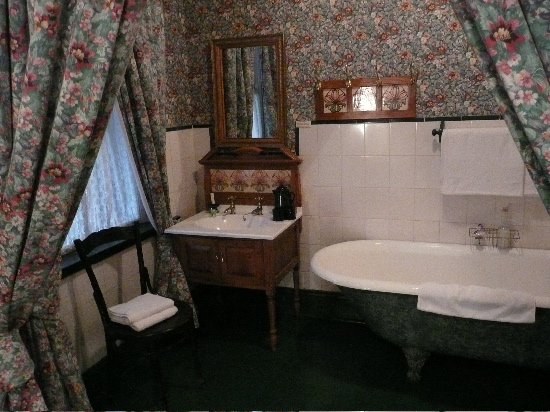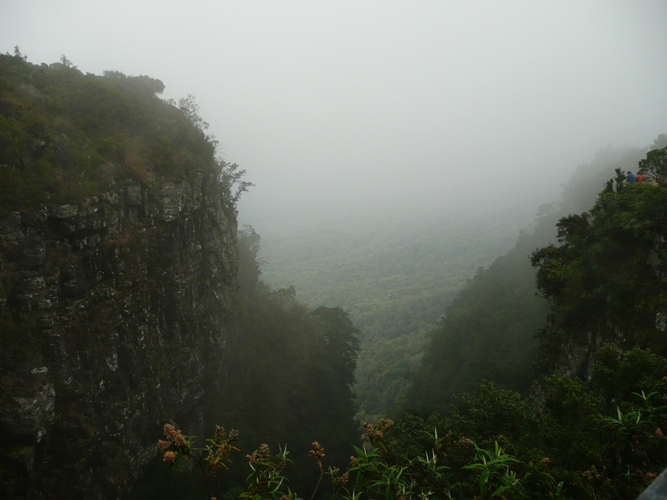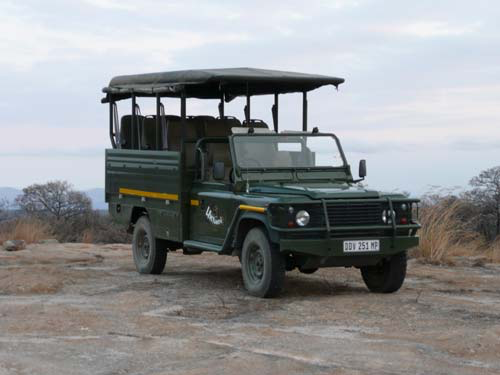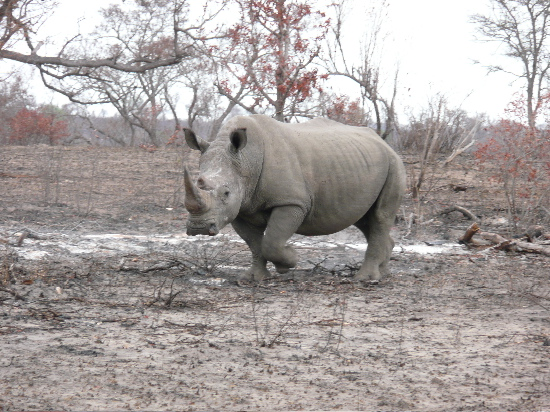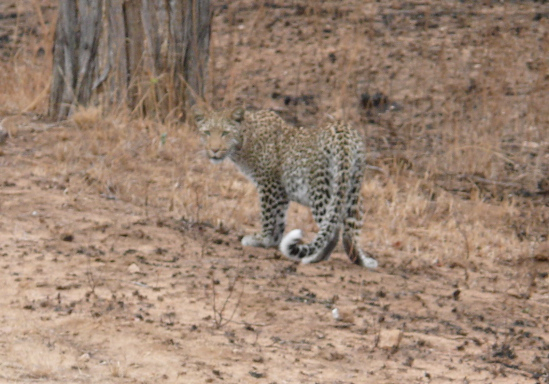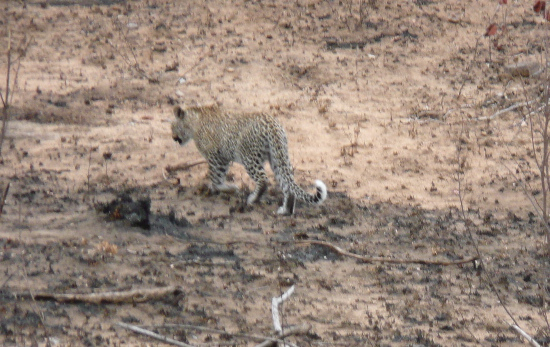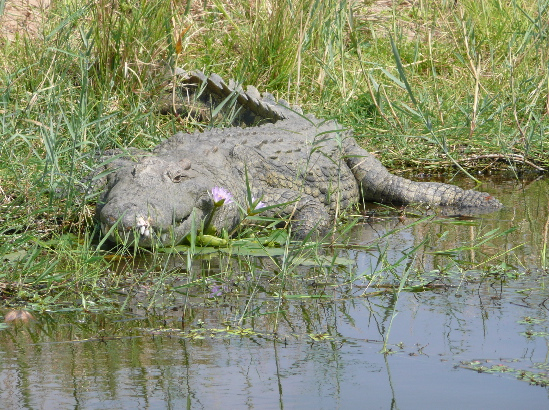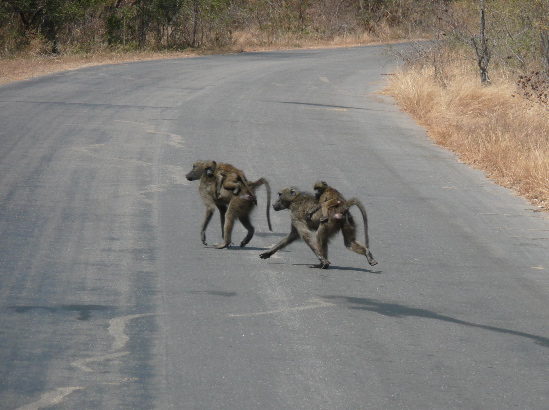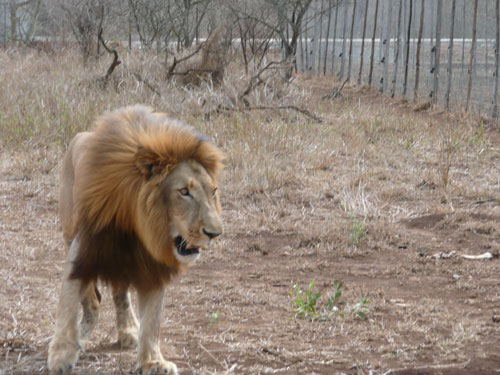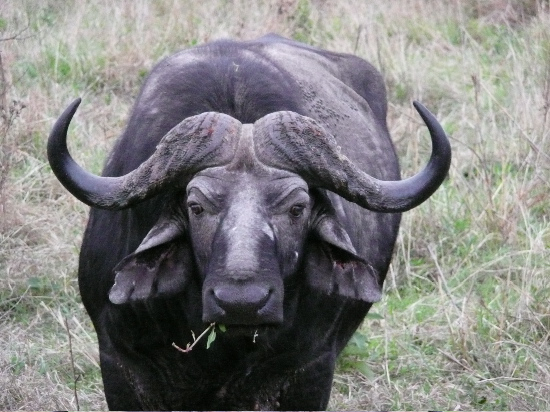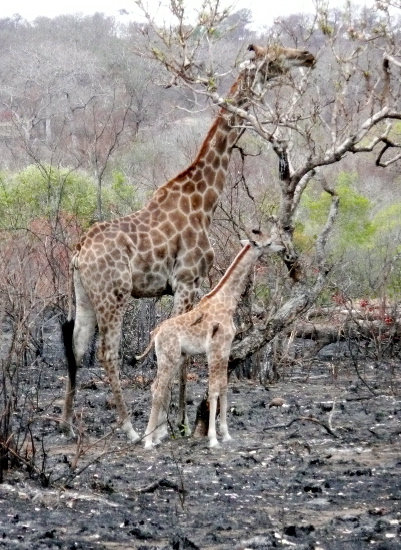We did it!!! We went to South Africa!!!
There were concerns up until the last minute as the company we had booked with, had gone under, but luckily we were “picked up” by another agency…But, we only got our exact itinerary 24 hours before leaving.
We flew from Montréal to Washington and there, we boarded a South African Airlines flight to Johannesburg. It is a 15 hours and 10 minutes flight. I never thought I could stand such a long flight…but obviously I did. The planes are comfortable with more legroom than on other short haul carriers it seems…even if I got my share of crushed toes as my legs always end up in the aisle. Each seat has its own interactive TV screen with films and games. Unfortunately they were the same ones on the return flight soooo a bit less exciting the second time around especially since the return flight was 18 hours as it made a stop in Dakar (to spray us with insecticide and inspect our carry on but not allowing us off the plane). My secret to survive such long flights is to get up every hour to get a bottle of water and to stretch.
Our arrival in Johannesburg was smooth; we retrieved our luggage and were directed through a maze of construction to a remote pick up area where we boarded a shuttle to our hotel.
The hotel was very nice and clean with spectacular birds of paradise bushes by the pool.
It even had free Internet service. The buffet meals were varied and tasty…and the service in the dining room was amazingly speedy.
We were to find out that this was pretty much the case all over the country, which illustrates how different South Africa is from what we imagine Africa to be. It is a very “efficient” country, you are easily understood and there is always a prompt response. Case in point, I did what I thought only idiots did: I lost my passport! It fell out of my bag onto the bus floor as I was getting money out to leave a tip to our tour guide and, as it was dark; I did not see it fall. It was midnight by the time I realized it was missing and called the tour company. They had located the bus and retrieved the passport within an hour and held it in a safe place until I picked it up the next morning. Someone was waiting for me at the gate, when I drove up to retrieve it. I was relieved and impressed!
As we had gotten to Johannesburg a day before our group, we decided to put it to good use and booked a day tour to Sun City and the private reserve of Pilanesburg close to it.
We were picked up by a very nice and young driver/guide named Vuyo (meaning Joy) who was well informed and interesting. We were originally sharing the van with 3 other couples, two young couples from the US, one from NYC, one from Chicago and an older couple from Malaysia. The couple from Chicago decided to get off before we even left the city as they were concerned by the traffic delays. The older couple was very keen about seeing Sun City and not the animals, which seemed very odd to me. The husband spent most of the day on the back seat answering calls and Emails on his Black Berry… so we ended up talking and having fun with the kids from NYC who were very pleasant. She had spent a month in SA last year for work and was back for more.
This being our first reserve we were very excited when we came across our first elephant!
They are huge! And sometimes come quite close to the vehicles. We were obviously not allowed out of the van but could open the window to take photographs. I was very excited to have a new camera with a X10 zoom which allowed me some pretty good shots, but this being early spring, there was little greenery and so the animals “disappeared” in the background (which is the way nature intended it: as camouflage). I have not retouched the colours on any of the photos, so the headshots are usually my most impressive images…and I tried to take a lot of those. Zebras are very photogenic in such an environment. They are fascinating to look at. No two are alike. They usually travel in groups as the mix of moving stripes confuses their predators.
We saw several Impalas, with M shaped black markings on the behind.
An imapala (Aepyceros melampus Greek aipos “high” ceros “horn” + melas “black” pous “foot”) is a medium-sized African antelope. The name comes from the Zulu language. This one carries birds that groom its fur.
I have a hard time telling all those various antelopes apart, the Springbok is quite similar but its belly fur is whiter.
We saw some Warthogs and baboons but as I got better shots of them later in the trip, I will save them for later in the story.
Sun City, the second part of our excursion, in a city that was built in the middle of nowhere by hotel magnate Sol Kerzner in 1979. The fact that it was relatively close to Johannesburg and Pretoria and that it was allowed to provide ‘immoral’ entertainment such as gambling and topless revue shows, which were banned in South Africa, made it a very popular spot. Nowadays it still offers gambling, as well as golfing, several fancy hotels, a huge pool and all sorts of amusements. The fountains are especially impressive.
All the guide books warn us not to ask locals about politics, but our guide, as all the other South Africans we met during the trip, talked spontaneously about his life and expressed satisfaction rather than resentment over the resolution of apartheid. The message is always “Forgive, forget and move on”. It is hard for me to appreciate the progress that has been made since 1994, but it obviously is huge. Even if there are still extremely miserable living conditions for some, the government has been, and is still, building low cost housing especially in Johannesburg and Cape Town. The biggest change had to be the right for blacks to go where they want, to live anywhere (they can afford), to have access to education and therefore to opportunities of bettering their future. One of our (white) guides was very quick to point out a white beggar on a street corner, a sign of evolution according to him, as it meant that blacks are taking up white peoples’ jobs…I am not convinced about that one…but so it goes…. One of the big issues facing the people of South Africa is Aids. Statistics vary but saying that one out of three is infected is not unheard of… One organization predicts 18 million Aids orphans by 2010! Our guide Vuyo is the one such orphan (he did not say what his parents died of but he is the caretaker for his brothers) who has been taking care of 2 younger siblings since he was 14 years old.
We returned to the airport the next morning to join our group arriving from Paris (for the French) and from London (for our fellow Quebecers). There were 65 of us all together!! Way too many but it worked out Ok. We were split between 2 buses. Our guide was a very calm and cultured man who established a quiet respectful atmosphere in our bus. He was born in Paris, thus his impeccable French, but has lived in South Africa for 40 years, so his knowledge of the country is very extensive.
We started the tour with a drive through Soweto. This is the 100 square km suburb south of Johannesburg where 3 million people live.
Soweto was the centre of political campaigns aimed at the overthrow of the apartheid state. The 1976 student uprising, also known as the Soweto uprising, started in Soweto and spread to the rest of the country.
Nowadays Soweto is a melting pot of South African cultures as there is a large influx of people fleeing other areas and countries to try and find a better life here.
Sowetans pride themselves on being urbane and streetwise. They look down on the moegoes (country bumpkins) from the rural areas. I could not help notice how well dressed everyone is, even in the poorest areas, their clothes are always nice, elegant and in good shape. Black South Africans are, as a whole, very good looking, tall and lean, with delicate facial features, an easy smile and very good posture.
We saw Nelson Mandela’s first home and a monument to remember Hector Pieterson, a young boy who was killed as he walked out of school in the middle of a supposedly peaceful march, on June 16 1976. There are some very posh homes in some neighborhoods but also terse reminders in others, when you see watchtowers where people had to show the papers spelling out where they were allowed to be…as if the entire city was a jail compound…
What impressed me the most about Johannesburg were the high walls, the barbed wire, the electrical fences,

the alarm systems signs that say “Armed response” everywhere. It gives out a chilling feeling that no one is safe here… I also did not see a lot of trees or flowers…but that may be due to the fact that we did not stay in Johannesburg very long so I may have missed them.
In contrast, Pretoria, the administrative capital, is greener. The city was named after Andries Pretorius, the victorious leader of the Boers in the war against the Zulus.
We visited the Voortrekker Monument: The Voortrekkers (Afrikaans and Dutch for pioneers, literally “those who trek ahead”) were emigrants during the 1840s and 1850s from the British Cape Colony into the interior of what is now South Africa. The Great Trek consisted of a number of mass movements under a number of different leaders. One of the sadly memorable events that marked this trek was the battle of Blood River: On December 16, 1838, at the Ncome River, 464 Boers under the command of Andries Pretorius defeated more than 10,000 Zulu warriors, killing 3000. The deeply religious Boers did not ascribe the military victory to their technically superior armaments, but interpreted it primarily as a sign of God. With that battle behind them, they believed even more strongly that white predominance over blacks is God’s own will. It made me a bit uncomfortable to be visiting a museum in their honor….
There is a nice view of the city from the top of the monument, as is the case at the Union Building.
The next morning we set off for the Premier diamond mine.
This is where the famous Cullinan diamond was found on January 26, 1905. It is the largest rough gem-quality diamond ever found, at 3,106.75 carats (621.35 g). The stone was named after Sir Thomas Cullinan, the owner of the diamond mine. It was cut into three large parts by Asscher Brothers of Amsterdam, and eventually into some 11 large gem-quality stones and a number of smaller fragments The largest polished gem from the stone is named Cullinan I or the Great Star of Africa at 530.2 carats (106.04 g) and the second, the Cullinan II or the Lesser Star of Africa, at 317.4 carats (63.48 g). Both gems are on display at the Tower of London, as parts of the Crown Jewels of the United Kingdom.
Photographing a mine is not very exciting especially since we were not allowed inside, but here is part of the installations as well as some flowers we encountered along our visit.
Our guide said that diamond mining is the cleanest and safest mining there is…she also said that because the technology is so much more efficient now, the mine plans to go through all its mountains of rejected soil to retrieve smaller stones that went undetected in the past…
Their gift store was…glittery. They claim to cut the stones with more facets than is the norm, thus making them more sparkly. Watching them work was fascinating.
After drooling of some gorgeous jewelry in the mine store, we set out for Ndebele, home to the Ndzundza tribe. A bit of a tourist trap…but we got to see a reconstitution of their traditional way of life. The women wear necklaces and bracelets but they are not the giraffe women that we associate with that type of jewelry.
Our final stop for the day was, appropriately, Pilgrim’s Rest. It felt like being in a movie set, a gold rush movie… Even our rooms had that look.
From there we drove on to Graskop. This area along the Blyde River Canyon is very picturesque. The Potholes are impressive rock formations that were shaped millions of years ago by erosion. The bizarre swirl holes developed when the once rapid river carried masses of sand and debris.
Just a few kilometers north a small loop road leads to “God’s Window”, from where you are supposed to have a wonderful view on the Lowveld. Unfortunately, it was foggy and the window was “closed”.
We also stopped at Tree Rondavel for some more picture taking (not for recommended for people who are afraid of heights)
After lunch it was time for another game reserve. Unfortunately, this was to be the least interesting of all the five I visited during this trip. First because there had been a fire in the previous month and everything was seared therefore there was no food for the animals to feed on thus very few animals to watch. The few photos I took there seem to be in black and white… And, to add insult to injury, we had a very poor guide, who did not spot anything and who would not even slow down the jeep when one of us saw something.
Speaking of Jeeps, this is what they look like …
To conclude that evening we had a fireside Boma supper, with live entertainment. The costumes were very colourful and the lead signer was astounding…he sang and danced and led the group with unbelievable energy and a really good voice. He even gave an astounding rendition of a classic Italian opera tune…
The next morning was THE big day as far as I was concerned. We were going to Kruger Park!
This is a huge park: 350 kilometers in length, and averages 54 kilometers in width – in size it equates to the countries of Wales or Israel. It has been in existence since 1926. Recent figures indicate that there are some 147 species of mammal, 507 species of bird, and in excess of 1950 plant species in the Park.
We had to get up at 5 in the morning because sunrise and sunset are the best times to view animals as this is often when they come out to feed. We got lucky and were paired with a great guide this time and got to see a lot of animals.
We saw several giraffes, even a mother and her young calf. Their coulouring darkens with age. As giraffes deliver standing up, the babies falls 2 meters to the ground. We were told that this helps expel mucus from the lungs as well as sever the umbilical cord. The way to tell males and females apart is by their horns: the females have bristles on top of them.
We saw several rhinoceroses. They are huge and look almost prehistoric. There are 2 kinds: the white ones and the black ones. It seems the names do not come from their colour but from their mouths: the “white” ones have a wider mouth for grazing, thus were initially called the wide mouth rhinos and from there became the white rhinos. The white ones are more common and only have one developed horn while the black rhinos have 2 fully developed horns. They have very poor eyesight but keen sense of hearing and smell.
The highlight of the day was spotting a leopard! As they are very shy animals and usually stay up in trees, they are very hard to find. We got to see a mother and her cub as they walked away to the hills. From afar we saw the young one sprinting to catch something under the watchful eye of its mother.
We saw more elephants. This time it was a family with young ones. The male was the last one in the line and very protective of the group.
We saw a warthog eating. They kneel down on their front legs to do so. They truly are ugly, but thanks to Disney…they are now endearingly so.
We saw a big crocodile soaking up the sunshine…or waiting for a prey. In this photo he seems to have a flower on his ear…
We saw black wilderbeest (also known as the Connochaetes Gnou)…
One of the big five that we had not yet encountered was the water buffalo…also a formidable animal. We did see some here but, unfortunately, they were hidden by vegetation so the photos were not very clear. I did get better shots later in the trip.
We saw lots of baboons. When the female is in heat her posterior swells and becomes bright red…hard to miss…yet I do not have any pictures of it…
We even came across a snake…
On our way to Swaziland, after the safari ride, we drove through the park for a while and got to see some of the famous lodges located on the grounds. They obviously are more expensive but allow their guests more opportunities to see the animals.
On the way to the border we stopped at a craft fair. We walked through hundreds of stalls with jewelry, batik, wood and stone sculptures, Zulu hats and who knows what else. Everywhere we were greeted the same way: “Bonjour! C’est bon, c’est pas cher” which is French for: “Hello! This is nice and cheap”. Surprisingly we were often greeted in French, in shops and restaurants. The people have a good ear for languages obviously as they never asked us what we spoke. They knew it and reacted with the correct pronunciation and accent…always surprising!
Along the way I tried to photograph the various types of houses of the area. There is a variety. Often, a thatched roof hut, either circular or square, flanks even more “modern” houses. There are also some buildings literally made of sticks and stones.
We stopped for lunch in a restaurant that was next to a reserve where they were caring for abandoned lions…it was disappointing that they were held in captivity but it did allow for some close ups…unfortunately with a fence in between….
Our next stop was Hluhluwe for the night and another safari the following morning. There were several spectacular trees on the hotel property. Acacias are everywhere and very fragrant. Their bark has a greenish yellow colour and their flowers reminded me of mimosa.
We had noticed heart shaped birds nests hanging from branches in the last few days and here we got to see the occupants. They feed their young through the smallest hole and only open the second one to let them out when they are ready to fly out on their own.
Although Hluhluwe Park is famous for its rhino population, what we saw the most of were water buffalos. They have the strangest heads as if someone had parted their horns with a comb and drawn eyebrows with a pencil.
There also were some giraffes quite close by. Such strange animals…they are in a league all their own…I was surprised to see a mother and her baby in the middle of a very open area, thinking they were very exposed but was told that it is safer for them to be there as they can see predators coming. Upon closer inspection there were four other adults around them, standing guard.
Our next destination was Durban…and our first look at the Indian Ocean. The ocean was spectacular!
The city…less so but then we did not spend a lot of time there…This is one of the places where we saw several KFC outlets…they are all over! It makes you realize that there are no more untouched corners in this world. I visited grocery stores that felt very familiar, they are all so alike. I think this group of children was the cutest thing I saw while the most colorful had to be these rickshaws.
From Durban we flew to Cape Town. And here starts the second part of a trip and a very different one it is!
Take me to South Africa Part 2





























